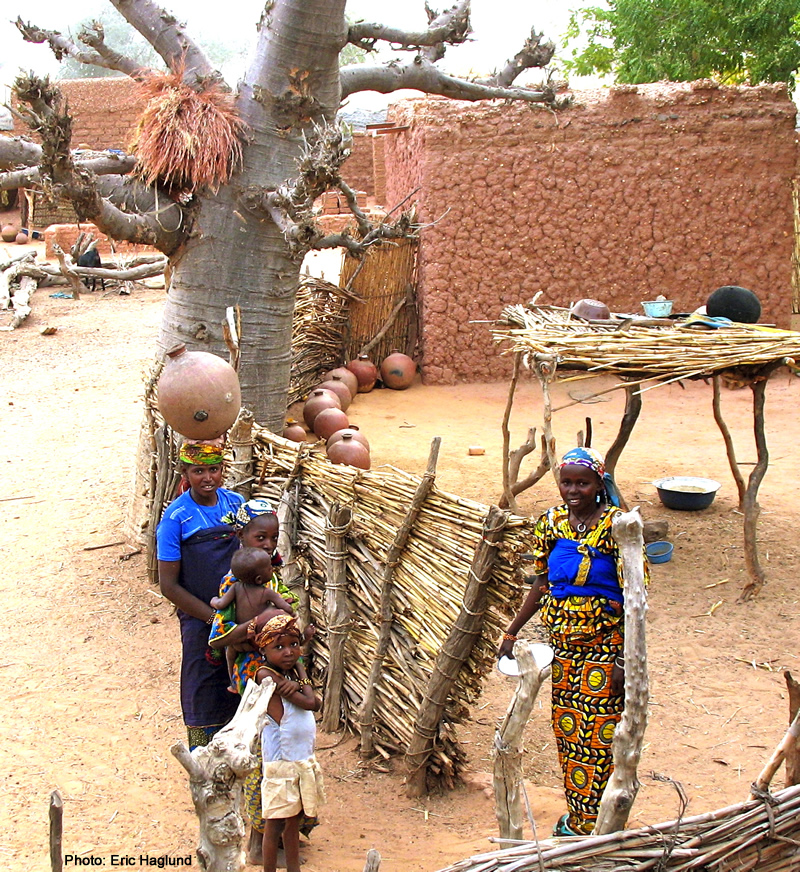
Hausa Women: Niger | Creative Commons
One of Africa’s poorest countries is embarking on a major project that will use solar to reduce the costs and pollution burden of diesel-powered village microgrids. The project will also simultaneously expand energy access to people who currently have no electricity. HOMER®Pro is playing a major role in this transformation, serving as the primary design tool for new hybrid microgrids in rural villages with intermittent or non-existent electricity supplies.
With 80% of its land area covered by the Sahara desert, Niger recently ranked 187 out of 188 countries on the UN Human Development Index, which measures life expectancy, education, and gross national income per capita. The people of Niger face daunting environmental challenges including naturally scarce water resources that are shrinking even further due to climate change and overuse, creeping expansion of the Sahara desert over arable land, and political instability caused by the presence of extremist Islamic groups linked to Al-Qaeda.
Reaching Beyond Diesel in Africa
A new World Bank-funded project called “Access to Solar Power in Niger (NESAP) ” is a cause for hope. The Niger government, the Ministry of Energy and Petroleum, NIGELEC (Niger’s national utility) and several other stakeholders have just completed a feasibility study to determine where the new hybrid microgrids should be built, and what the specifications should be. This effort began with a preliminary survey of 30 remote villages in Niger, and due to lack of data on electricity load curves from 22 of them, the scope of a detailed feasibility study was eventually narrowed down to eight. The other 22 villages could be added to the project if adequate data become available.
Data Collection Often Challenges Energy Access Projects
The Niger hybrid microgrid team conducted site visits and used national census data and satellite imagery to establish current and future potential load curves for the villages in the study. The following data anomalies made it difficult to compare the villages:
- Population numbers were difficult to determine since estimates from local leaders often proved to be unreliable; the project team ultimately extrapolated from national census and satellite data.
- Information on current electricity use for water pumping – a potentially large consumer of electricity – was often non-existent or incomplete.
- Despite the presence of diesel generators, historical load data was sometimes not available.
Ultimately, the Niger microgrid planning team applied a number of correction factors to various data sets to determine load curves and likely future scenarios. They then moved ahead to plan the eight hybrid microgrids.
How Niger Streamlined the Microgrid Planning Process
One goal of the project was to project population growth and electricity demand for each of the villages through the year 2023. This led to several assumptions:
- Because of important differences in the ways individuals consumed electricity from one village to the next, the team had to apply correction factors to estimate future electric demand. For example, rural users had lower demand than urban populations (rural demand was estimated at 1.8kWh daily and urban communities at 2.5kWh daily); new users were deemed to be the lowest electricity consumers, so adding them in relatively greater numbers to a future village population brought down future consumption averages.
- Estimating electricity demand for businesses and public infrastructure – along with residential consumption – introduced too much variability in the planning process. The Niger team handled that by establishing typical peak demand and daily load curves for categories of commercial operations and public service needs. While the categories were the same for each village they were adjusted to reflect each population.
- Since the villages in the study have been using generators for varying hours during the day, the Niger team had to apply standard factors to plan for the increase in electric demand when power becomes available 24/7.
Using HOMER Pro to Develop Hybrid System Designs
In order to simplify engineering challenges and reduce design costs, the Niger team made the decision to limit the number of system configurations available to each village. The final design for everyone consisted of a diesel resource, a PV array, lithium ion batteries and the necessary inverters.
Uniform maintenance costs, interest, and inflation rates were applied to each project, and HOMER’s random variability was applied to make the demand curves more realistic. Meanwhile, support building (or container) designs were standardized for cost savings.
Engineers on the Niger team also decided to size the systems in a modular fashion. For example, if a HOMER simulation recommended a PV system size of 47kW, it would be rounded up to 50kW. While PV systems were sized in increments of 10K, appropriate modular range limits were also placed upon battery systems and inverters.
Finally, the Niger team ran HOMER Pro simulations for multiple system designs to determine optimal configurations and obtain the necessary cost comparisons. HOMER outputs are a mainstay of the Niger report to the World Bank and should support financial projections for the project. According to the report, Niger hopes that the new hybrid systems with their solar production and battery storage will reduce electricity costs for isolated communities, improve the quality of electric service, put control of energy capacity in the hands of the people Niger, and improve energy access overall. We’ll be providing updates as the project moves along.
